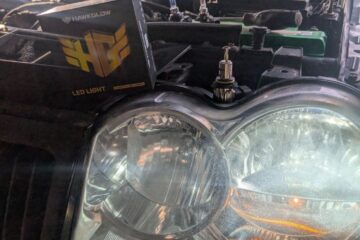Roadside emergencies are an unfortunate reality of car ownership, often occurring when least expected. A peaceful trip can easily be interrupted by a flat tire or engine trouble that can bring your plans to a screeching halt. These situations disrupt your day and come with financial challenges that many drivers are unprepared to face.
Having a solid plan for funding car repairs is a cornerstone of responsible vehicle ownership. Emergencies can strain your budget if you don’t have a safety net. However, understanding how to budget for these expenses can bring a sense of relief, ensuring that repairs are handled promptly to keep you safe on the road.
How Much Do Roadside Emergencies Cost?
Car trouble can take many forms, but flat tires, dead batteries, and engine issues are some of the most common. Depending on the type, a flat tire can cost $50 to $200 to replace, usually caused by a sharp object or a worn tread.
Another frequent issue is a dead battery, with replacement costs typically between $75 and $200. More serious problems, such as engine trouble, can cost several hundred to thousands of dollars to fix, depending on the extent of the damage and the parts that need to be replaced. Therefore, having a robust car repair fund is crucial for any car owner.
No matter the emergency, it can leave a dent on the unprepared car owner. Understanding these potential costs empowers car owners to prepare financially for emergencies. Knowing the ballpark figures makes it easier to set realistic savings goals for unexpected repairs.
Budgeting Strategies for Emergency Car Repairs
A proactive approach to saving for car repairs is one of the best ways to avoid financial headaches. Setting aside a small portion of your monthly income for vehicle-related expenses is a practical starting point. Even $25 to $50 a month increases over time and can provide a much-needed cushion when emergencies arise.
It’s also a good idea to keep track of your car maintenance and repair history. Doing so will give you a clearer picture of how often repairs occur, and you can budget accordingly. Prioritizing a car repair fund ensures that your finances won’t take a significant hit when an issue inevitably happens.
Explore Funding Options
Even with careful saving, emergencies can sometimes exceed your set aside. When this happens, alternative funding options can help cover the costs and get your car back on the road. Personal savings are often the first and best solution, but exploring other options can provide a sense of security, knowing there are ways to handle unexpected expenses.
For instance, $800 loans offered by some lenders can quickly cover car repairs. These loans often don’t require a credit check, making them an accessible choice in urgent situations. However, reviewing the loan terms carefully is crucial to avoid hidden fees or repayment terms that you might not be able to afford, or that might add to your financial stress. Borrowing responsibly ensures you can handle the expense without creating a long-term burden.
Roadside Assistance Plans are another alternative that can help offset the immediate costs of minor emergencies. Plans offered by providers like AAA or through insurance often cover towing, battery jump-starts, and tire changes. These services can save you money and provide help on the spot, reducing the need for large out-of-pocket expenses.
Certain repairs might be covered if your car is still under a Manufacturer Warranty or you’ve purchased an Extended Warranty. These warranties can save significant money on covered repairs, but it’s essential to understand their terms and what is excluded. Reviewing your coverage before an issue arises ensures you know what to expect.
These funding options, when combined with preventive maintenance and budgeting strategies, create a comprehensive plan for effectively managing unexpected car repair costs.
Preventive Measures to Employ
Preventive care is one of the most effective ways to reduce the chances of a costly breakdown. Regularly inspecting your car’s tires, brakes, and fluid levels can catch minor issues before they escalate into more significant problems. Scheduling routine maintenance, such as oil changes and tune-ups, keeps your vehicle running efficiently and reduces wear and tear. This proactive approach not only ensures your safety on the road but also helps maintain the value of your car over time.
Driving habits also play a role in preventing roadside emergencies. Accelerating gently, avoiding potholes, and following weight limits for your vehicle can extend its lifespan and reduce the likelihood of damage. These simple steps help keep your car in good condition and limit unexpected repair costs
Staying Prepared for the Unexpected
Roadside emergencies are unpredictable, but they don’t have to derail your finances. Planning with a dedicated car repair fund and understanding your funding options will allow you to tackle these situations without unnecessary stress.
Your solution to these unexpected situations is to stay on top of regular maintenance and adopt careful driving habits to minimize the risk of costly repairs. Indeed, it’s unavoidable, but with a little effort, you can handle them confidently and keep your car on the road.




